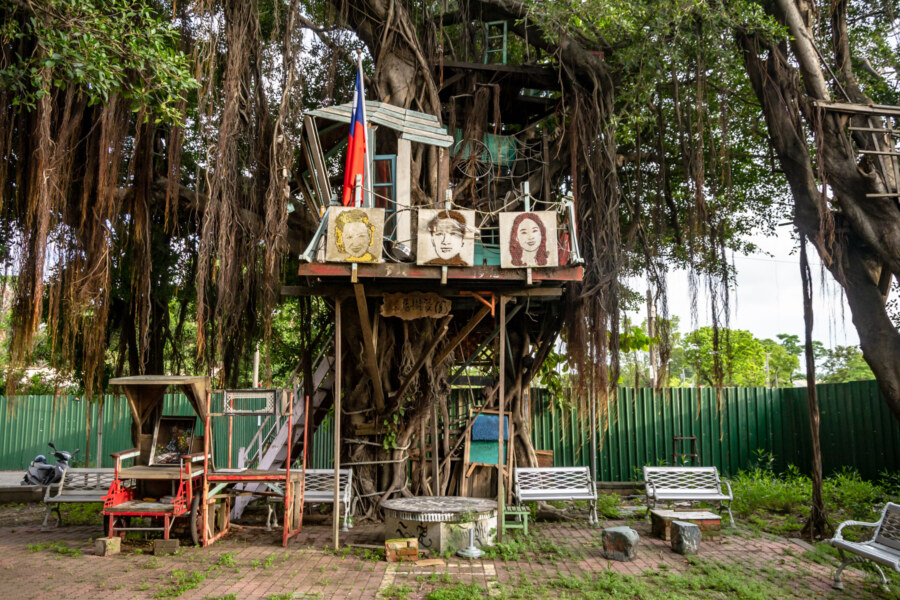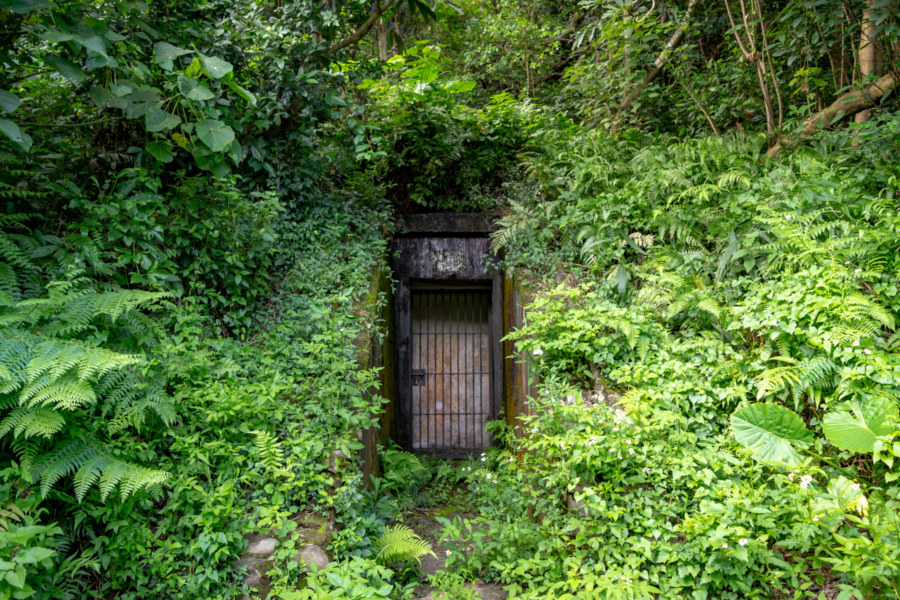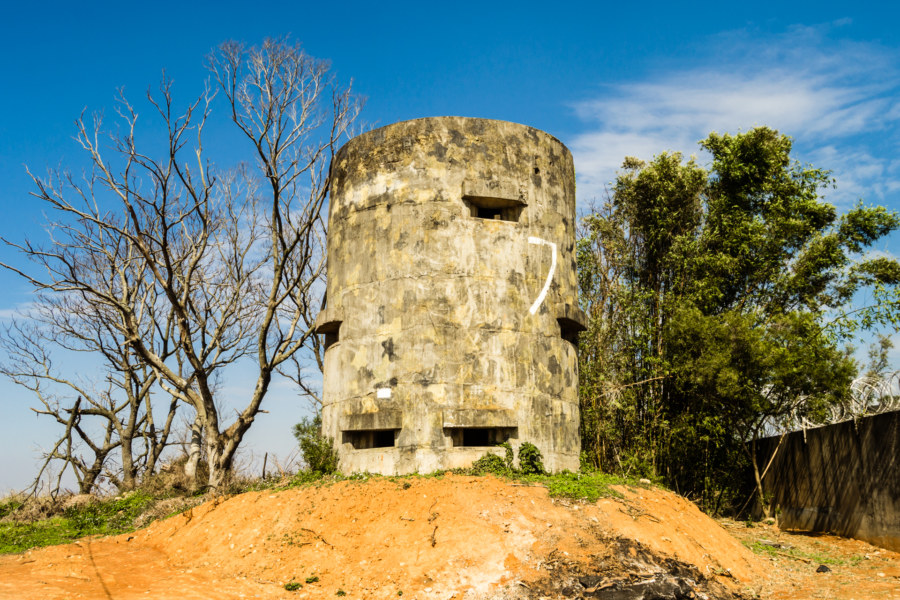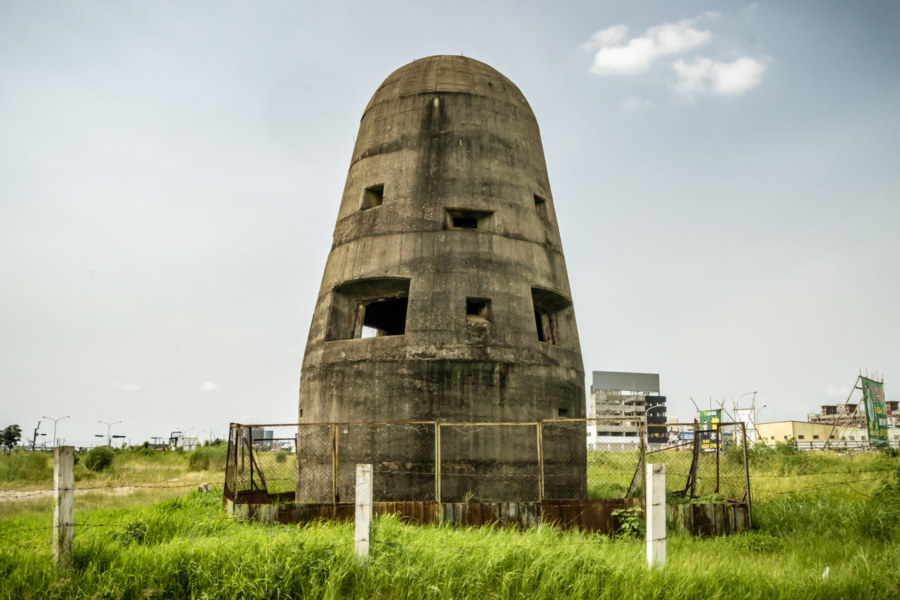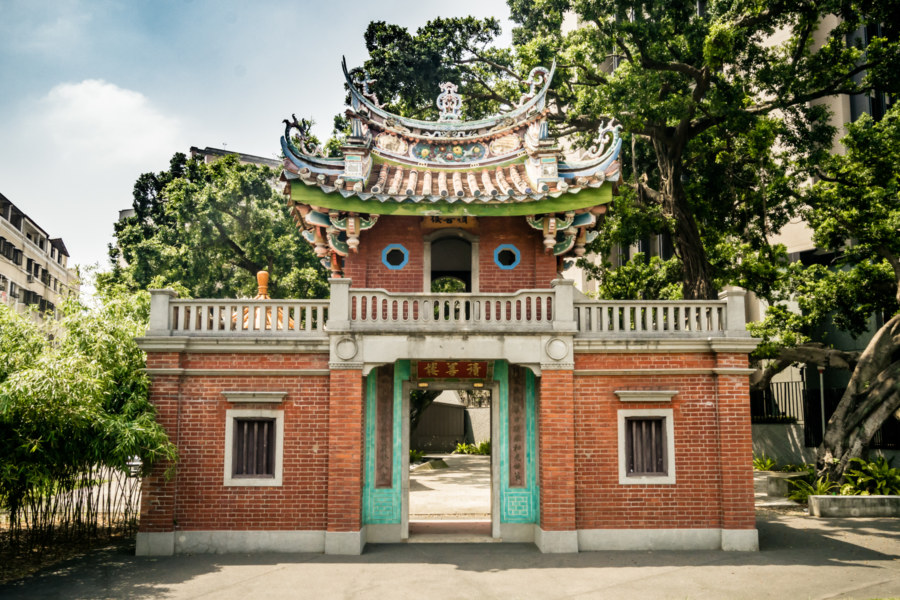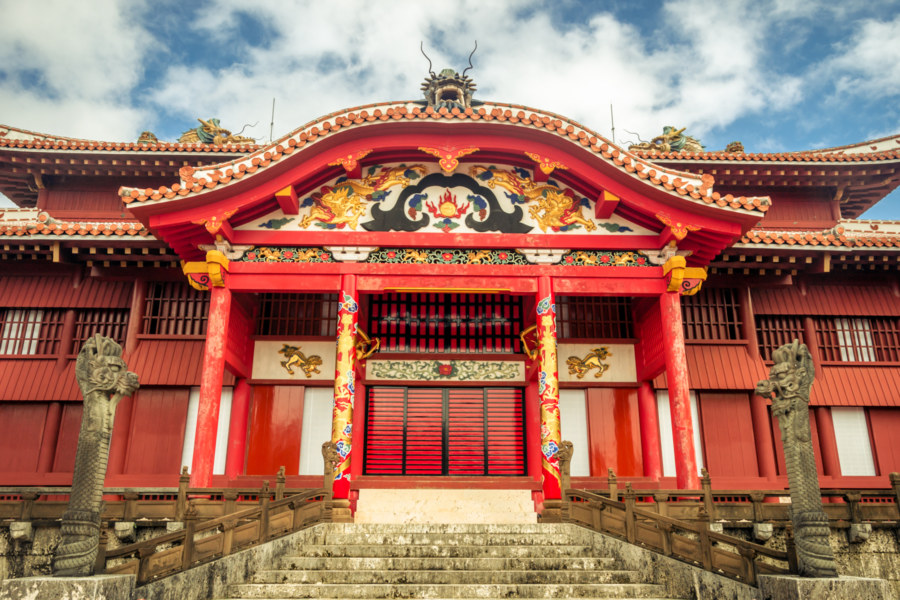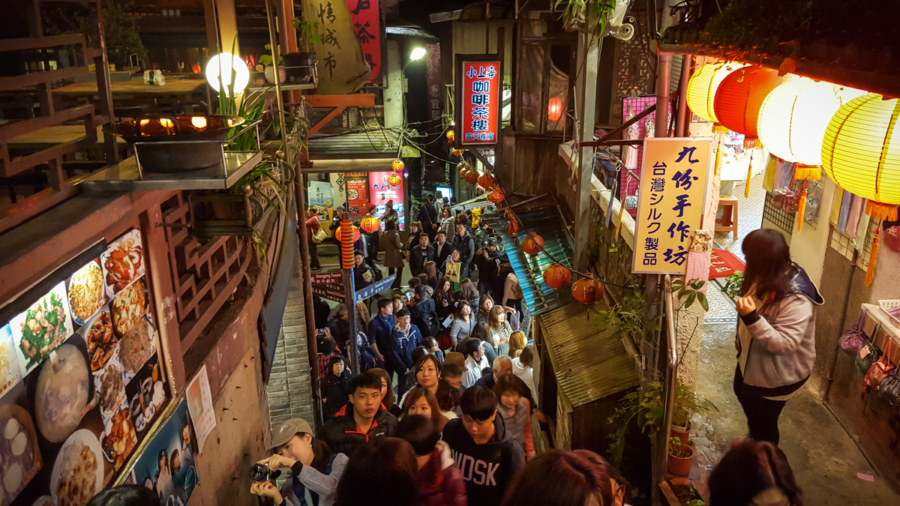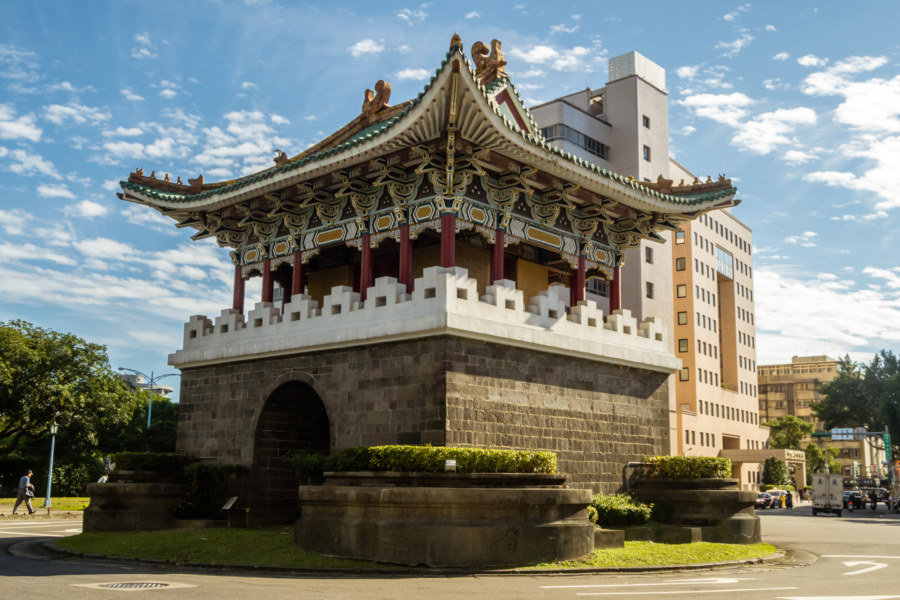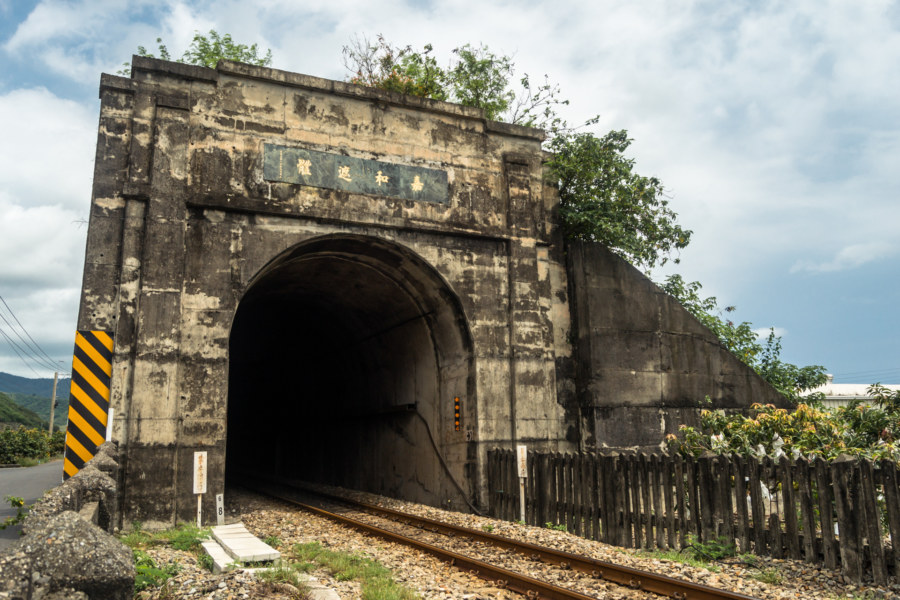The Second Air Force New Village (二空新村) is a former military dependents’ village in Tainan, Taiwan. It was established east of Tainan Airbase in 1950, primarily for members of the Republic of China Air Force and their families, and it eventually grew to become the sixth most populous of the official military villages in Taiwan. From 1950 into the 1960s several waves of construction and development increased the village to nearly 1,000 households, with a sizable number of unregistered structures scattered around the periphery. As with most other military villages this one was steadily dismantled and demolished over the course of many years in the late 2000s and early 2010s, part of a nationwide urban renewal program that relocated the remaining residents into more modern apartment blocks.
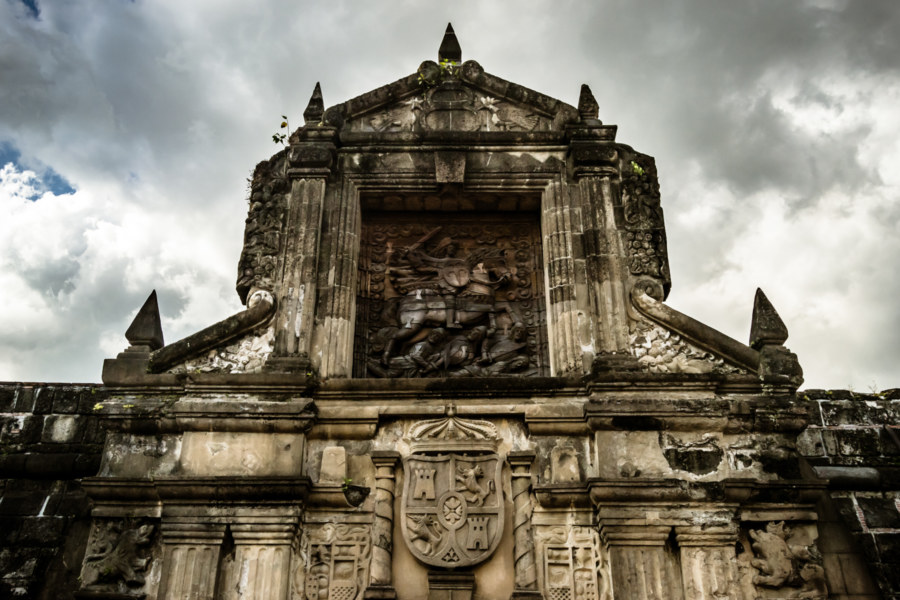
Castles, fortified gates, city walls, arsenals, and batteries; this section contains all manner of historic fortifications.
Adjacent Terms
A Door in the Forest
An abandoned bunker in the foothills of Yangmingshan.
Recently I went riding up Jiànnán Street (劍南街), a scenic mountain road connecting Zhongshan and Shilin. Along the way I noticed many bunkers and sentry posts, remnants of a time when this entire mountainside was under military control and strictly off-limits to civilians. One bunker in particular struck me as particularly pleasing, for it was little more than a door in the forest, a dark promise surrounded by a vivid shade of green. For reference, this place is located on the eastern flank of the modest Wénjiānshān (文間山), and for more about the area you can consult Chinese language blogs here and here.…
Postcards From Intramuros
Intramuros (literally “within the walls”) is the former center of Spanish colonial power and the Catholic Church in the Philippines. Located in the heart of old Manila, this fortified district has a long and complicated history stretching back more than four centuries, but little of what remains is original and untouched. Intramuros was heavily damaged during the Japanese invasion in 1941 and almost completely destroyed in the Battle of Manila in 1945. Almost everything seen in my photos was reconstructed beginning in the 1950s and continuing to the present day.
Dadu Plateau Anti-Airborne Fortifications 大肚台地反空降堡
Dàdù Plateau (大肚台地) is a geographic feature of great strategic importance to the defense of central Taiwan. It overlooks the Qīngshuǐ Coastal Plain (清水平原) and occupies high ground on the far edge of the Taichung Basin (台中盆地), home to the majority of the population of Taichung, the third most populous metropolitan area in the nation. The entire length of the plateau is peppered with military facilities from the massive Ching Chuan Kang Air Base (空軍清泉崗基地) in the north to Chénggōng Ridge (成功嶺) down south. In between one will find a number of abandoned or disused bunkers, gun towers, and blockhouses. This post focuses on seven anti-airborne fortifications located in the central part of the plateau starting with the #7 Anti-Airborne Fort (七號反空降堡), my introduction to this cluster of ruins.
Taichung Aerodrome Gun Tower 臺中飛行場機槍堡
Not much remains of the former Taichū Aerodrome 臺中飛行場, a Japanese colonial era airbase originally built in 1911 on the northwestern periphery of central Taichung. The airbase saw a lot of action in World War II and several kamikaze units were stationed there in the final months of the war. After the arrival of the KMT it was used as a hub for aviation research and development before entering into civilian use in the 1970s as Shuǐnǎn Airport 水湳機場. In 2004 operations were transferred to the nearby Taichung Airport 台中航空站 and, over the following decade, the former Japanese airbase was completely demolished as part of an ongoing city-wide urban renewal plan. The only building spared was a lone gun tower built in 1940, formally designated a historic site in 2006, and officially known as the Former Japanese Army Taichung Aerodrome Gun Tower 原日軍臺中飛行場機槍堡.
Jishan Gatehouse 積善樓
Jīshàn Gatehouse (積善樓; sometimes written as Chishan or Chijhan) is a minor historic building not far from Taiyuan Station (太原車站) in Beitun, Taichung. Originally this site was occupied by the residences of the Lài (賴) family, immigrants from Zhangzhou in China, who made their home here in 1897. Decades later they funded the construction of this unusual gatehouse on the recommendation of a fengshui (風水) master; the name of the building literally translates to “accumulate goodness”. The design and some of the materials are Chinese but the structure also shows western influences and craftsmanship as filtered through Japan. Five banyan trees surrounding the gate are the only other legacy of the homes that once existed here. Nowadays the area is a city park.
Shuri Castle 首里城
I visited Okinawa in November 2013 on one of my first side trips from Taiwan. Gathered here are some of my photographs from a brief tour of Shuri Castle 首里城, also known as Shuri-jō, a historic Ryūkyūan gusuku built on a hilltop in Naha around 650 years ago. Almost nothing seen here is original—the castle and almost everything around it was destroyed in the Battle of Okinawa and reconstructed from historic records between 1952–1992.
A Quick Trip to Jiufen and Keelung
Last weekend I enjoyed a couple of days outside of Taipei in the northeastern part of Taiwan. I went there with friends, ostensibly to show them around Jīnguāshí 金瓜石 and Jiǔfèn 九份, a famous mining town and major tourist attraction in the mountains of Ruifang, and ended up staying in Keelung for the night on a whim. Having recently purchased a new phone I bombarded Instagram with numerous pictures and plenty of commentary as the trip progressed. This quick and dirty post is a collection of some of my better smartphone snapshots as well as an experiment in blogging with broader brushstrokes. Perhaps you will get a sense of how I travel: spontaneously, intuitively, and with a keen eye for details.
Taipei Xiaonanmen 臺北府城小南門
Today is winter solstice, the shortest day of the year in the northern hemisphere, and it is a record-breaking 30°C in Taipei. In Chinese culture it is customary to consume tāngyuán (湯圓, glutinous rice balls typically immersed in hot, sweet soup) on winter solstice, better known to locals as Dōngzhì (冬至), a time when families gather together and celebrate growing one year older. Since I have no family here I will be lining up at 36 Yuánzǐ Shop (三六圓仔店) for a bowl sometime later on—though I might just skip this particular ritual if the line-up is too crazy. Two years ago I was informed, contrary to expectations, that you won’t actually age without eating tangyuan on dongzhi. If I miss it this year I suppose I won’t mind.
Jiahe Railway Tunnel 嘉和遮體
Here is yet another roadside curiosity in the deep south of Taiwan: a false tunnel on the coastal plains of Fangshan, Pingtung. It doesn’t cut through any mountainside nor is it built to withstand landslides. It’s just an 1,180 meter tunnel that trains pass through for no discernible reason. I first read about this on Michael Turton’s blog and later saw it on my first round-the-island bicycle tour. More recently I took a spin around the southern loop once more, and spent a little extra time examining this concrete oddity in an attempt to divine its purpose.
